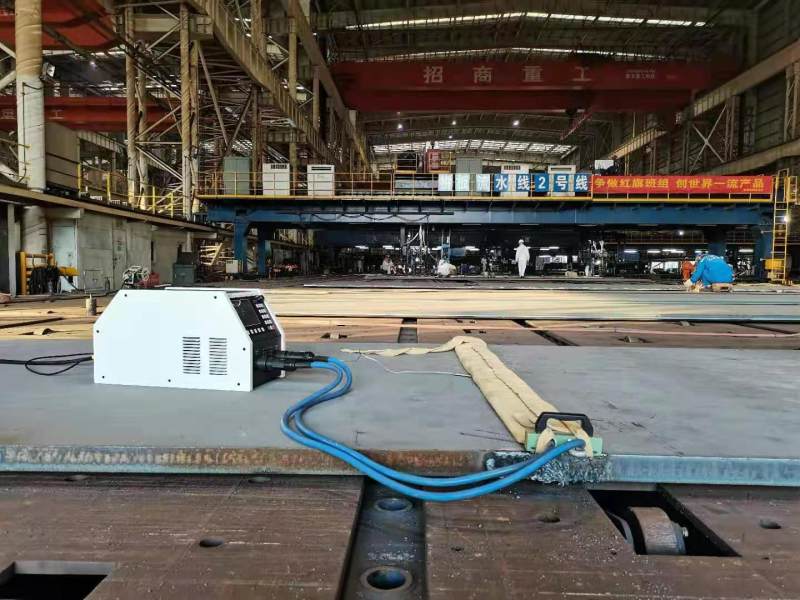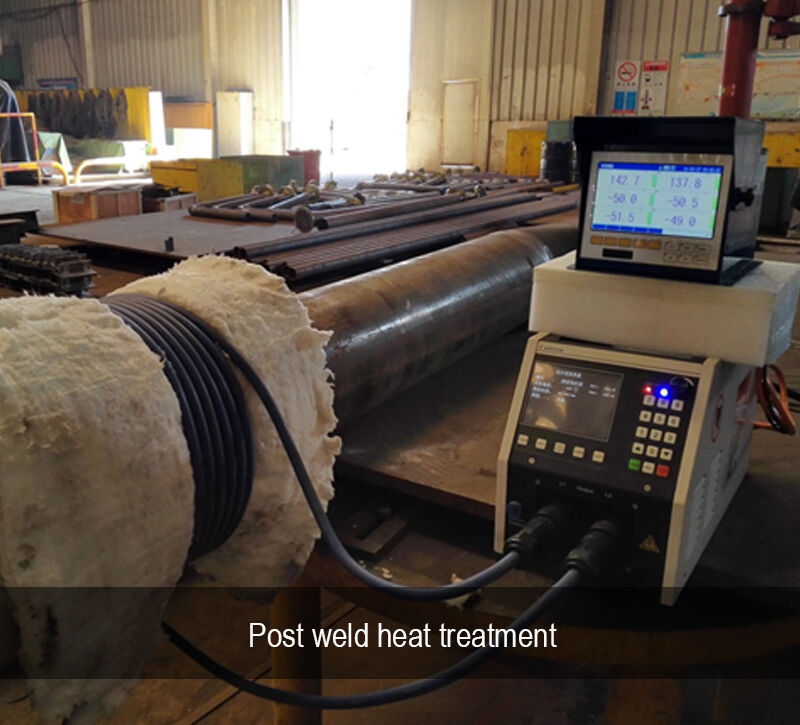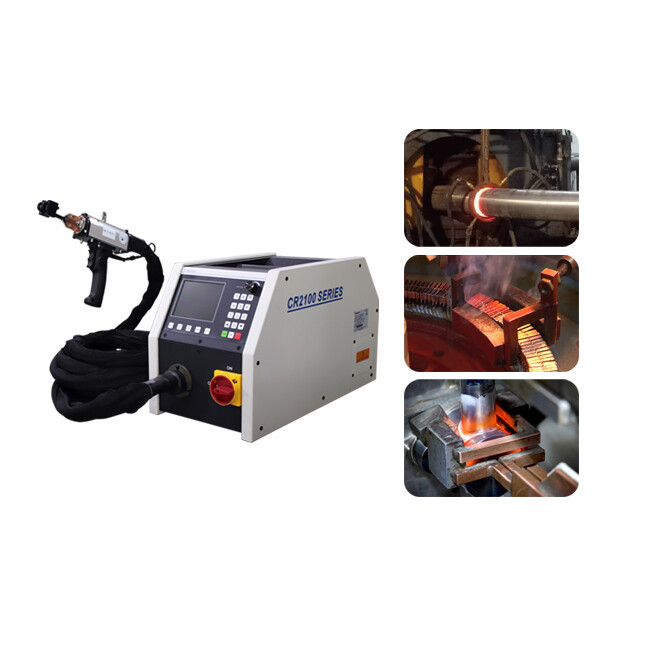

You must match the power, coil design, and frequency to your job. First, know your materials and what you want to do with heating. Your workspace is important because it changes the kind of induction system you need. Canroon provides excellent solutions that help you get the best from your 30kW induction heater.
Key Takeaways
Know your materials. Magnetic metals get hot faster than others. Pick your heater based on the metal you use.
Set your heating goals. Jobs like brazing or melting need different power and frequency. Match your heater to what you want to do.
Think about your workspace. The size and shape of your area matter. A portable heater may work best for jobs at different places.
Look for safety features. Find cool-to-touch cables and overcurrent protection. These keep you and your equipment safe.
Check support options. Pick a supplier with good customer service and maintenance help. This makes sure your heater works well.
Application Needs

Materials and Workpieces
You should know what materials you want to heat. The kind of material affects how a 30kW induction heater works. Magnetic metals, like steel, get hot faster. This is because they use eddy currents and the hysteresis effect. Non-magnetic metals, like aluminum, do not heat as well. The table below shows how different materials react to induction:
Induction can be used for many jobs. You can heat metals like aluminum. You can anneal thin steel wires. You can quench small shafts. You can braze saw blades. You can even melt metal powders. The size and thickness of your workpiece matter too. Thin pieces heat up faster. This is because most heat stays on the surface. Steel heats up faster than copper. This is because steel has higher resistivity.
Heating Goals
You need to know what you want to do with your heater. Some common goals are heat treating, brazing, soldering, melting, forging, annealing, and stress relieving. Each job may need different power and frequency. For example:
Heat treating and forging need deep heat, so lower frequencies are better.
Brazing and soldering need quick surface heat, so higher frequencies help.
Melting and annealing need a mix of both.
If you want to change the quality or structure of metals, you must set the induction heater to match your goal.
Production Volume
Think about how many parts you need to heat. If you have a lot, you need a fast system that can run for a long time. Big, automatic induction systems save energy and time in busy factories. If you have a small shop or do not heat many parts, you can use a smaller and cheaper heater. The size of your parts, how fast you need to work, and your workspace all matter. Even for cooking or small jobs, picking the right heater makes your work easier and saves time.
Key Features of a 30kW Induction Heater

Power and Frequency
When you look at 30kw induction heater models, check both power and frequency. Power decides how quickly you can heat things up. Frequency changes how deep the heat goes into the metal. High frequency induction gives fast surface heating. Lower frequencies are better for heating deep inside the metal. You can change the power to fit your job. This helps you use less energy and work better.
Tip: Use higher frequencies for surface jobs. Use lower frequencies for heating thick pieces.
Coil Design
The coil is a very important part of the induction system. You need a coil that fits your workpiece’s shape and size. A good coil gives even heating and saves energy. Pure copper coils are best because they last longer and carry current well. Always check the coil’s quality before picking a heater.
Cooling Systems
A good cooling system keeps your heater safe. Most 30kw induction heater models use water cooling. Water cooling gives better temperature control and helps the heater last longer. Some systems use air cooling, but these are best for small jobs. Some advanced systems use phase-change cooling for top results.
Air Cooling: Simple and cheap, but not very strong.
Liquid Cooling: Great for big jobs and long use.
Phase-Change Cooling: Works best, but is more complex.
Temperature Control
Good temperature control stops overheating and saves energy. Modern heaters can keep temperatures within ±5°C. This means you get the same results every time. Good control also protects your workpieces and the heater.
Safety
Safety features keep you and your equipment safe. Look for cool-to-touch cables, overcurrent protection, and power overload protection. Soft start modes help the heater start smoothly and last longer.
Always check for certifications like ISO 9001, CE, RoHS, and UL. These show your heater meets safety rules.
Induction Heating Machine Selection
Workspace and Portability
Think about your workspace before picking a machine. Small spaces can limit your choices. Here are some things to think about:
Power and frequency depend on the metal type and melting point.
Energy efficiency helps you save money in the long run.
Melting speed decides how fast you finish each job.
The cooling system must work with your plant’s setup.
Size and footprint should fit your space.
Following industry standards keeps your work safe.
Portability is important too. A portable 30kw induction heater gives you more options. You can move it to different places for on-site heating. This helps a lot in automotive and aerospace jobs. You can finish heating tasks quickly and easily with a portable machine.
Control Interface
A simple control interface makes work easier. Many machines have advanced features. You can get machines with LED lights, digital displays, and touch screens. Some systems connect to other machines for better control. The table below shows some control panels and their features:
Certifications
Always check for certifications when picking a machine. Certifications like ISO 9001, CE, RoHS, and UL show the machine is safe and high quality. These marks mean the heater is reliable and safe for your workspace. Certified machines help you follow industry rules and avoid problems during checks.
Matching Induction Heater to Use Cases
Metal Hardening
A 30kw induction heater can make metal parts harder. This works best with metals that conduct electricity, like steel. Magnetic metals get hot faster than nonmagnetic ones. The coil should fit the part’s shape for even heating. Use lower frequencies to heat big parts all the way through. Higher frequencies are better for hardening just the surface. The table below lists what you need to think about when hardening metal with induction:
Tip: Always check the coil’s shape before you start hardening.
Brazing and Soldering
Induction can join metal pieces by brazing or soldering. This method heats the metal fast and evenly. You get strong joints because you can control the heat well. The table below shows how induction is better than old ways for brazing and soldering:
Note: Induction brazing and soldering save energy and give better results.
Shrink Fitting
Induction helps with shrink fitting in factories. It heats a metal part so it gets bigger. You can then put it onto another part. When it cools, it shrinks and holds tight. Here are the main benefits:
You only heat the part you need, so you save energy.
Other parts do not get damaged by heat.
Your workspace stays clean, with no soot or mess.
Automatic systems help you finish assembly fast.
You can control the heat for a perfect fit.
The table below explains why induction is good for shrink fitting:
Industrial Applications
Many industries use induction heater systems. Car factories use them to heat and harden small metal parts. Airplane companies use them to braze hard alloy saw blades. Metal plants melt metal powders with these heaters. Electronics makers heat different metals. Tool makers weld and treat carbide tools. Metal shops use induction for welding copper and brass and putting together motor rotors. Sometimes, people even use induction for cooking.
Tip: Pick the right heater for your industry to get the best results.
Selection Process
Picking the right 30kW induction heater takes a few steps. You want a machine that works for you and fits your workspace. Follow these steps to help you choose.
Assess Needs
First, think about what you need to heat. Write down the metals and shapes you will use. Decide what you want to do, like hardening or brazing. Figure out how many parts you need to heat each day. This helps you find a heater that matches your work and how much you need to do.
Tip: Make a list of your heating goals and workpiece details before you look at machines.
Compare Models
Check different models from brands you trust. Look at their power, frequency, coil design, and cooling systems. See how each model controls temperature and keeps you safe. Use a table to keep track of what you find:
This table helps you see which heater is better for your needs.
Consult Experts
Talk to people who know about induction heating. Ask questions about coil design and power settings. Experts can help you avoid mistakes and pick the best machine. Many suppliers let you talk to them for free. Use this chance to learn more about the machines.
Request Demonstrations
Ask to see the heater work before you buy it. Watching it heat metal shows you how fast and even it works. You can check how well it uses energy too. This helps you know if the heater is right for your job and workspace.
Note: Seeing a live demo lets you test heating speed, how even the heat is, and how well it works. You can make sure the machine fits your needs.
Evaluate Support
Good support after you buy is important. Top companies like Canroon give strong help so you can use your heater easily. Here is what you get:
Warranty Period: Free warranty for 18 months if you use it normally.
Chargeable Repairs: Some repairs may cost money during the warranty.
Lifetime Maintenance: You can get help even after the warranty ends.
Support Hours: You can call for help any time, day or night.
Response Time: Calls are answered quickly, usually in three rings.
Service Request Process: You can ask for help by phone, online, or email.
Initial Remote Support: You get quick help and answers right away.
On-Site Service: Experts come to you if remote help does not fix it.
Post-Service Follow-Up: They check how your machine works and ask if you are happy.
Tip: Pick a supplier with good support and fast answers. This keeps your heater working well and helps you do your job better.
If you follow these steps, you can pick a 30kW induction heater that works for you and gives you good results.
Picking the right 30kW induction heater means you need to match it to your job. The table below lists the most important things to think about:
You should follow each step in this guide. If you talk to Canroon, you get these benefits:
Saves energy and works efficiently
Works cleanly with no open flames
Machines can be used for many different jobs
Contact Canroon for expert help or to watch a demo. You will find the best choice for your needs.
FAQ
What materials can you heat with a 30kW induction heater?
You can heat steel, iron, copper, brass, and aluminum. Magnetic metals heat up faster. Non-magnetic metals like aluminum need more time. Always check your material type before starting.
How do you choose the right coil for your workpiece?
Pick a coil that matches your part’s shape and size. A good fit gives even heating and saves energy. You can ask your supplier for custom coil designs.
Do you need special cooling for a 30kW induction heater?
Yes. Most 30kW heaters use water cooling. This keeps the machine safe and working longer. Air cooling works for small jobs, but water cooling is better for heavy use.
Can you use a 30kW induction heater for continuous production?
You can. These heaters work well for high-volume jobs. Make sure your cooling system and power supply can handle long hours. Regular checks help keep your machine running smoothly.
What safety features should you look for?
Previous:
Next:
Sign up for updates
